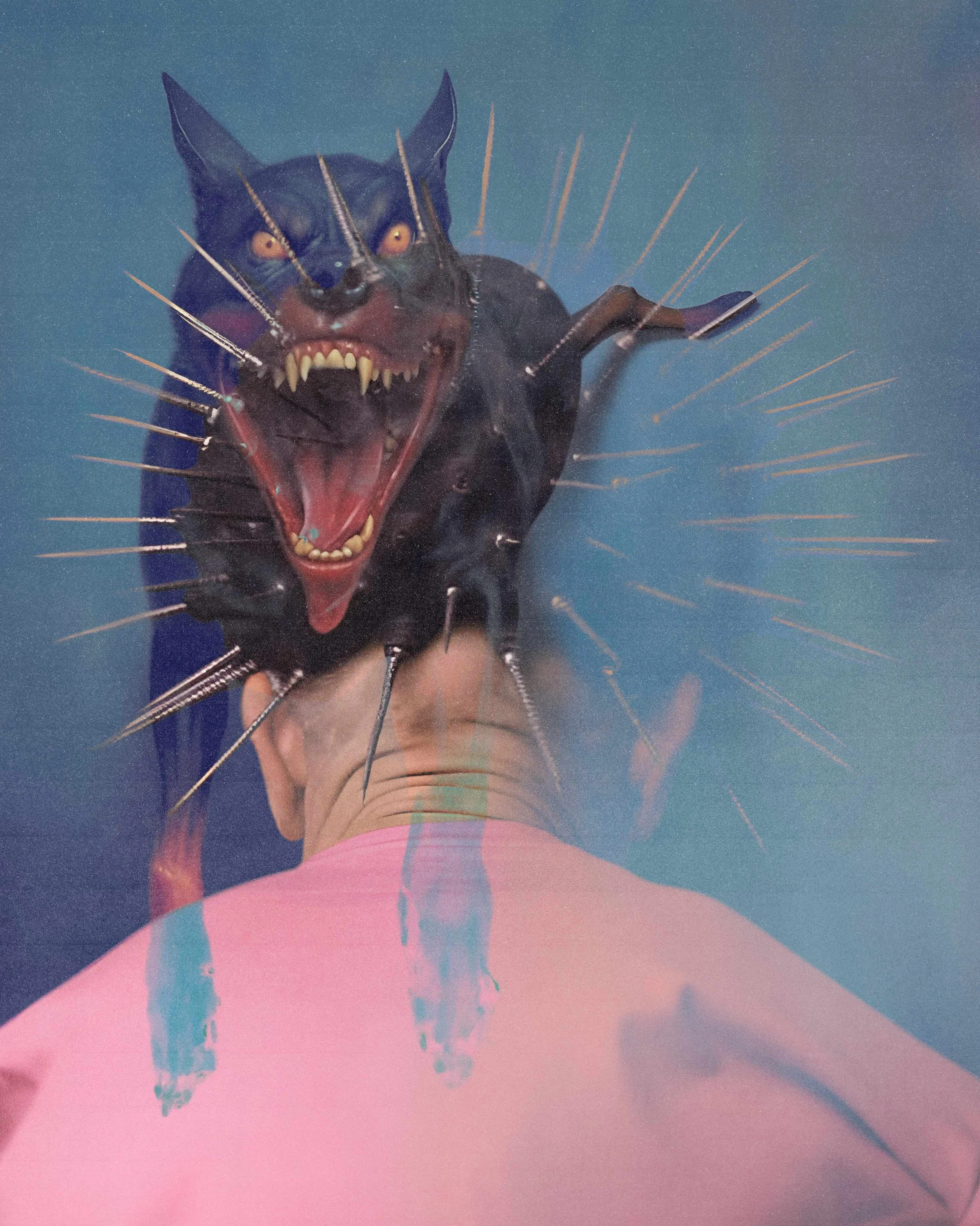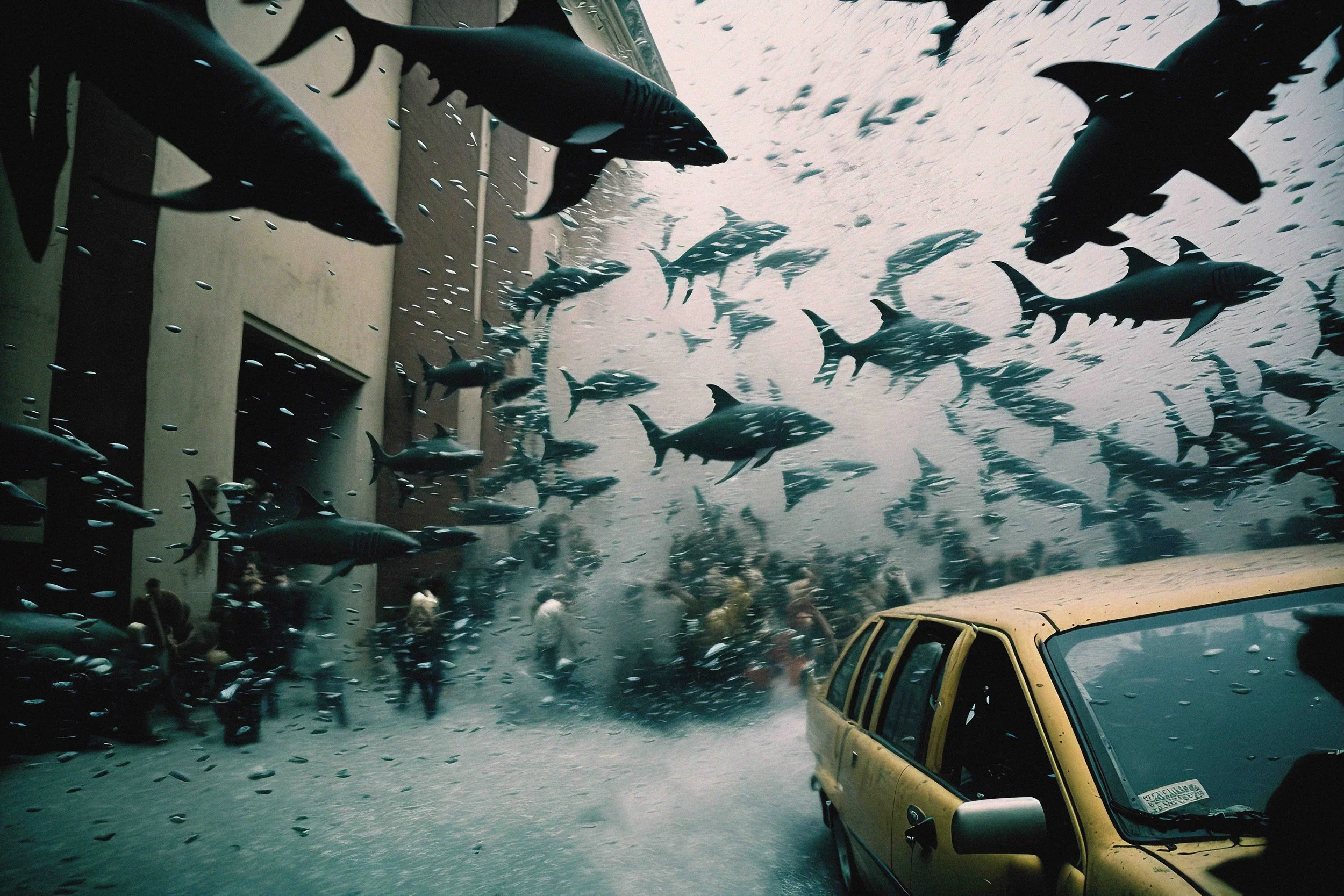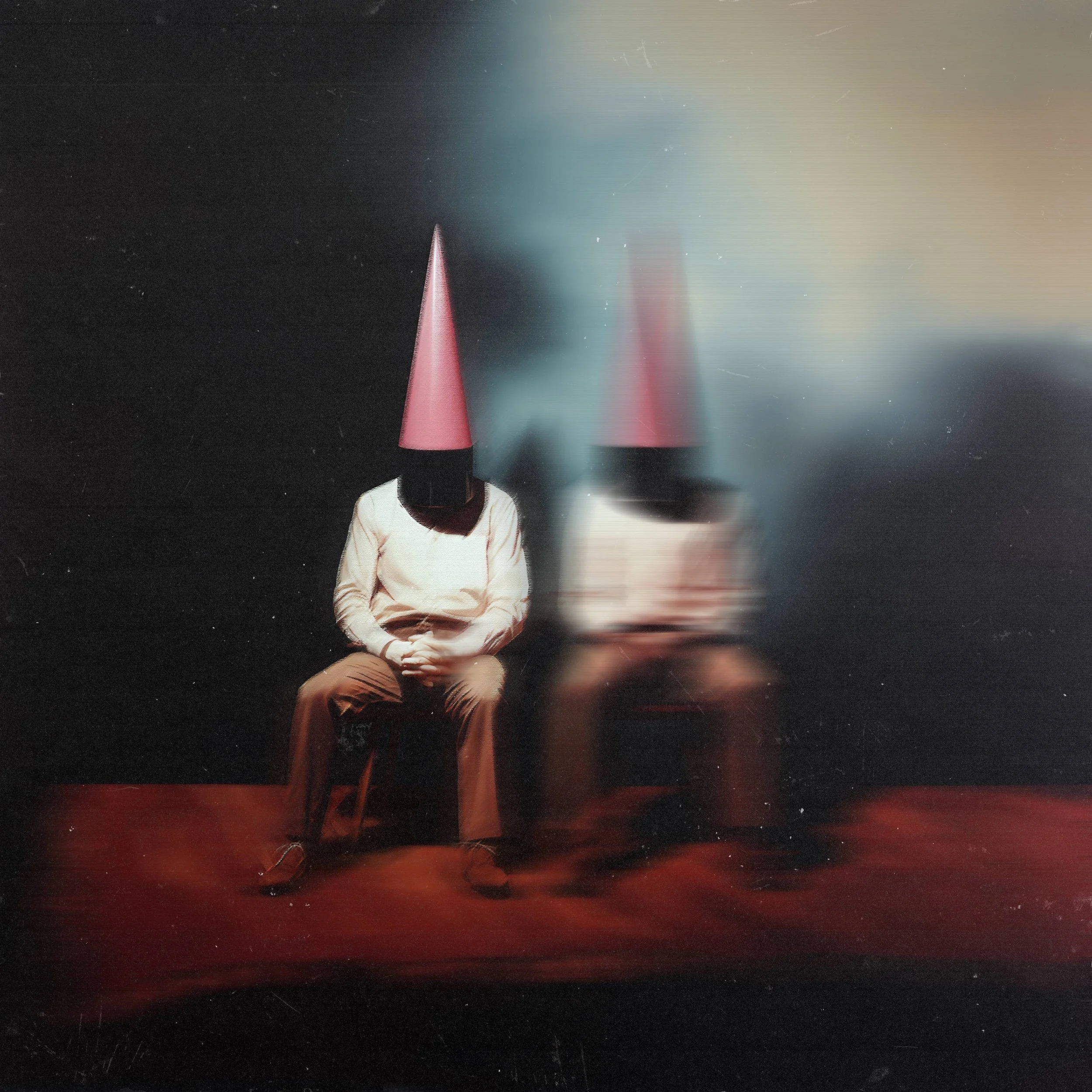Introducing visionary artist, Katie (IG: @katiemorris.art), a dynamic contributor to the AI art community who is known for pushing boundaries.
Her body of work stands as a testament to the union of absurdity, chaos, consciousness, and alternate realities. Katie skillfully ensnares her audience in a mesmerizing limbo, swinging between reality and surrealism. Her post-photographic images challenge the perception of the real and the artificial. They capture an uncanny sense of disorder that epitomizes our existence, while unearthing the fragile and ambiguous nature of human life.
Interestingly, even her early works, created before her exploration of AI, emanated a distinct AI-like quality. This subtly hinted at the profound connection that was yet to come. This interview explores the labyrinth of Katie's unique, AI-enhanced artistic universe.
Meet Katie!
Can you tell us a little bit about yourself and how you got interested in AI art?
I’m a multidisciplinary artist born and based in Scotland, UK. In late 2021, I began working closely with artificial intelligence and have continued to explore the intersection of art and technology in my current work. My practice is deeply rooted in themes of absurdity, chaos, consciousness and alternate realities. I briefly capture the viewer in a limbo between the real and surreal. My post photographic images stand out as notable works that blur the lines between the real and artificial. They outlandishly convey a sense of disorder that characterises our presence, while also highlighting the fragility and ambiguity of human existence.
Before AI was a known tool for artistic creation, I looked to more traditional mediums such as painting, sculpture, collage and printmaking. I first came upon AI as an art medium through research I was undertaking for a university project. At this time, I wanted to use the technology solely as an experiment. I never expected I’d become so intrigued. Quickly becoming captivated I fell down the AI rabbit hole. It’s funny because I’ve been told my older non-AI work has always had a strange AI quality to it. It all feels so weirdly linked and as if it were meant to be.
Can you walk us through your creative process when working with AI?
Experimentation plays a major role in my creative process. I have generated around 150,000 AI images over the past year, but have only taken around 1000 forward as final works. Most of my images are experimental and will never see daylight. The curation process for an AI artist is evidently long and strenuous, it’s a skill itself. The thing with AI is that, at the moment, it has its limitations. It’s hard to get the technology to do exactly what you want, and it can be unpredictable. For example, many of my generations do not accurately convey my initial ideas, so I find myself exploring a single concept for a while before working my way to the final piece.
Although, sometimes my most successful work is born from embracing the uncertainty and weirdness of AI. I create hundreds of unique images and variations to achieve anything close to the desired outcome, it’s a prolonged yet crucial part of the process. If I called it a day after the first image came out, I’d have nothing worth showing. I always upsample my images and do quite a bit of further editing in Photoshop – I enjoy this part a lot as I have full control. Adobe's new generative fill tool has been a great asset.
I recently finished a scene depicting a Glasgow football crowd - I changed each individual eye, nose, mouth, ear, head of hair and wrinkle from the original output. There’s a young lad to the left of the image with a Union Jack wrapped around his head. I was adamant that I wanted him to have a big tooth gap - generative fill was my best friend here.
In the past I have pushed AI forward into more traditional ways of working. I've incorporated AI into sculpture, painting, printmaking, and video works to investigate how various mediums can be amalgamated. I think looking at how AI can work and interact with other artistic mediums is an interesting concept and still incredibly unexplored.
What kind of message do you hope your art conveys to viewers?
I hope my art can be viewed as a passage of escape from the boundaries of our reality. I seek to confront the viewer with a dubious world of the improbable and absurd, leaving them to question the limits of their own existence. Though personally, my work is a way for me to make sense of the turmoil, ambiguity and unpredictability of life. I often grapple with the notion that life is woven in a universe of purposeless and meaningless chaos, lacking any fundamental meaning. In creating art, I help myself to understand that this very lack of meaning may be exactly what infuses life with its inherent preciousness and fragility.
How do you see AI impacting the future of art, and where do you see yourself in that future?
I believe AI will revolutionise everything, not just art. Many have concerns surrounding AI and its place in our future. People fear it will destroy art as we know it – a view that although I can understand, I do not agree with. When photography first came around, people thought it would be the end of painting as we know it. We can in the present see that these fears were not entirely founded. Photography and painting are now appreciated as their own creative mediums, both valued for their unique and distinguishable qualities.
It is very possible that AI will follow a similar path and ultimately develop into an artistic medium in its own right. The arrival of AI art does not indicate the end of traditional artistic mediums, but rather signals a new age of creative expression. It’s hard to say what I’ll be doing in the distant future. AI will have developed so vastly by then who knows what I’ll be creating. I recently had works exhibited in Rome and Milan, it would be cool to have a few more under my belt by then. In the meantime, I’m about to start my final year of art school, so really this is just the beginning for me. I’m excited to see where and what the future leads me to!
Can you share a defining moment or turning point in your journey as an AI artist?
My first time using Midjourney stands out. I had jumped around using various algorithms for a year, Stable Diffusion for the most part. When I gave Midjourney version 4a a shot and it was like nothing I'd seen before. Whilst we now have the V5.2 model, I will always value the earlier versions. They mark a juncture, when AI was distinct for its imperfectness. I don't think we'll see that again. At the moment it's all about training models to be as picture perfect as possible.
For more of Katie’s incredible work, make sure to visit her Instagram account: @katiemorris.art









